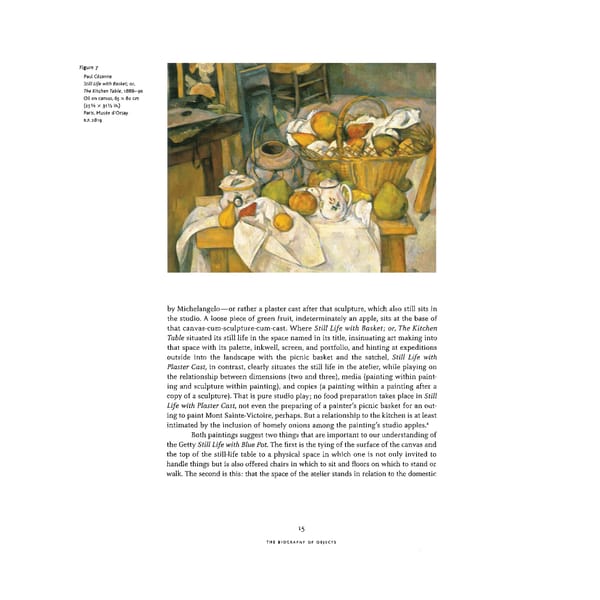Figure 7 Paul Cezanne Stili Life with Basket; or, The Kitchen Table, 1888-90 Oil on canvas, 65 x 80 cm 5 1 (25 /8 x 3i / in.) 2 Paris, Musee d'Orsay R.F. 2819 by Michelangelo—or rather a plaster cast after that sculpture, which also still sits in the studio. A loose piece of green fruit, indeterminately an apple, sits at the base of that canvas-cum-sculpture-cum-cast. Where Still Life with Basket; or, The Kitchen Table situated its still life in the space named in its title, insinuating art making into that space with its palette, inkwell, screen, and portfolio, and hinting at expeditions outside into the landscape with the picnic basket and the satchel, Still Life with Plaster Cast, in contrast, clearly situates the still life in the atelier, while playing on the relationship between dimensions (two and three), media (painting within paint- ing and sculpture within painting), and copies (a painting within a painting after a copy of a sculpture). That is pure studio play; no food preparation takes place in Still Life with Plaster Cast, not even the preparing of a painter's picnic basket for an out- ing to paint Mont Sainte-Victoire, perhaps. But a relationship to the kitchen is at least intimated by the inclusion of homely onions among the painting's studio apples.4 Both paintings suggest two things that are important to our understanding of the Getty Still Life with Blue Pot. The first is the tying of the surface of the canvas and the top of the still-life table to a physical space in which one is not only invited to handle things but is also offered chairs in which to sit and floors on which to stand or walk. The second is this: that the space of the atelier stands in relation to the domestic *5 THE BIOGRAPHY OF OBJECTS
 Cézanne in the Studio: Still Life in Watercolors Page 29 Page 31
Cézanne in the Studio: Still Life in Watercolors Page 29 Page 31